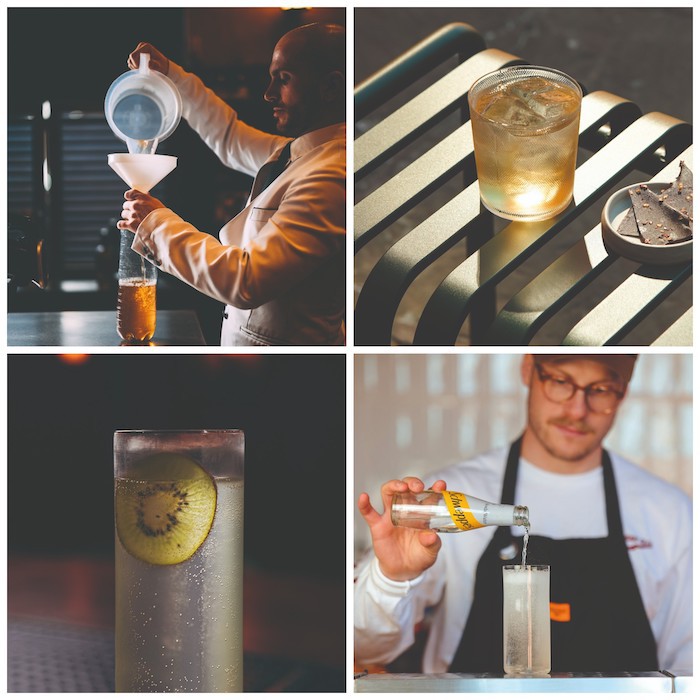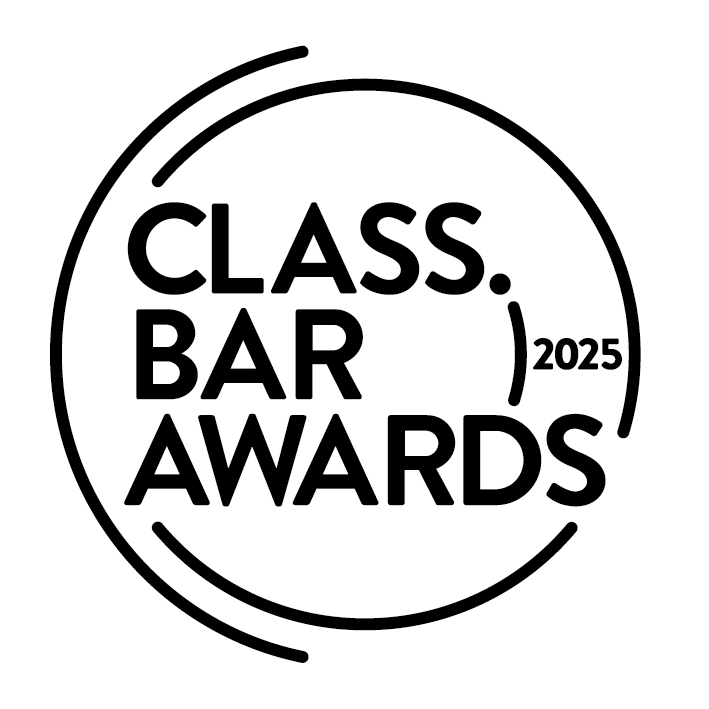
Force-carbonated Highballs are a must-have for many these days, but choosing which system is best for a bar requires careful consideration, says Tyler Zielinski.
The modern bar programme includes a few must-haves. Clear ice? Check. Stunning glassware? Check. Force-carbonated cocktails? In there like swimwear. And this, the Highball, has in recent years become a calling card for most ambitious cocktail bars in the UK, and globally for that matter.
Bars have become more economical through their adoption of these sophisticated force carbonation systems, such as PET bottle or kegged and tapped, which dispense supremely carbonated cocktails at volume with more consistency in quality, especially in the case of kegged cocktails.
“Cocktails on tap, much like pre-batched and pre-diluted Martinis, allow you to deliver consistency,” says Valentino Girotto, co-author of Bubbles: A Guide to Carbonated Cocktails and co-founder of Crossroads Consulting. “Whether it’s a quiet Tuesday afternoon or very busy Saturday, the drink will always taste the same and have the same texture, no matter who is serving it.”
These equipment and prep-heavy systems for dispensing Highballs have become the default for most bar businesses. But it’s important to evaluate the pros and cons of each setup to determine which one is best for you. Because, really, it is all about context.
Deciding which method is best for your bar
There are three primary methods for dispensing or building superior Highballs: the PET bottle system, kegged and tapped cocktails, and the Japanese method (the latter is the optimal technique for building Highballs à la minute).
The two former methods require force-carbonation, meaning CO2, which bartenders control the pressure of, is charged directly into the pre-batched cocktail to create a cocktail with well-integrated bubbles and measured dilution. While those may be optimal in most scenarios, when making an informed decision on which setup is best for your bar, it’s crucial to consider a few factors: the style of bar (are you a high-volume bar? Intimate table service-only venue?), the space and resources you’re working with (do you have fridge space for kegs and an efficient way to run lines to taps? And do you have the funds to fit this setup?) and how much you care about customisation to adapt orders to a guest’s preferences.
“PET bottle carbonation is quicker to execute, and the overall setup is much cheaper,” says Girotto, comparing this system to kegged and tapped Highballs. “However, pouring out of a large, plastic soda bottle doesn’t look classy, and you often have to explain to uneducated guests that you’re not pouring a cocktail you bought at Sainsbury’s.”
The process requires charging the pre-batched and diluted cocktail contained in the plastic bottle with CO2 via a system that includes a regulator, a carbonation cap or adapter, a ball lock fitting, beverage hose and the like. It means bartenders must open and close the bottle every time they serve a drink. This causes CO2 to escape every time a highball is dispensed which, in some cases where batches aren’t recharged in between uses, the first drink poured from the bottle will differ in carbonation from the last.
“With kegs, you never lose carbonation, because the liquid that leaves the keg is replaced with CO2, maintaining internal pressure and preventing degassing,” says Girotto. “However, despite cocktails on draught being the sexier and faster option compared to PET bottle systems, a kegged and tapped cocktail system is indeed the most expensive option and requires more space for service and fridge storage.”
At Speak in Code in Manchester, space was the determining factor in its setup. “We don’t have a huge space, nor do we have a back bar,” explains owner Nathan Larkin, who uses the PET bottle system. “We have a prep system where cocktails are fully batched, to a weekly par level, decanted into PET bottles then force carbonated three times and chilled for at least 24 hours before being used in service.”
While Speak in Code isn’t necessarily a high-volume venue, when the bar does get busy, Larkin prefers this setup for maximising speed and efficiency, which ultimately give his team more time to tend to guests. (Also, the quicker you serve, the more revenue the bar makes.)
At Bar Glue in Liverpool, however, co-owner Nathan Price enjoys the versatility that force-carbonation systems offer. “While there are now many, many different carbonated soda brands and flavour varieties, these can still be limiting,” says Price. “If you want to buy a curry leaf soda and no one is selling one then you’re out of luck. Force carbonation gives you that option to be creative, to pick flavours and create a drink that can be fully carbonated without the limitations of buying branded soda.”
The case for the Japanese method
The less tech-heavy and more theatrical Japanese method, which employs precise technique to control temperature, dilution and carbonation, has its perks too.

“I believe strong carbonation is not always the best, particularly for a whisky highball,” says Gento Torigata, owner of Waltz Bar in Shoreditch. “Many people think the more carbonation, finer fizz, the better.
“For me, that’s not always the case, as the temperature, intensity of carbonation and size of the bubbles are all dependent on the concept of each cocktail. That’s why at Waltz Bar we force carbonation for some cocktails, but build some others. We pick the right methods for different cocktails,” he adds.
Torigata’s take is one that really analyses flavour. Carbonation isn’t just textural, it also augments flavour; so acknowledging that specific drinks require certain levels of fizz speaks to how detail-oriented his approach is – one that’s grounded in Japanese techniques and methods.
It’s a trade off. Sophisticated carbonation systems sacrifice the traditions and theatre of the serve for speed, accuracy and efficiency (which, they would argue, leads to more attentive service and greater revenue).
So choose your setup wisely and ensure it’s one that fits both your bar’s concept and space. And regardless of how you make your Highballs, serve them cold as hell and you’re golden.
JAPANESE METHOD BY GENTO TORIGATA
1. Temper the hand-cut ice blocks. The frost on the ice surface needs to be removed by shaving it off or just by leaving it under room temperature to avoid uncontrolled dilution. If the base whisky is frozen, we use colder ice blocks as it won't crack since the temperature difference is very low. When you are making a Highball with room-temperature whiskies, ensure the ice is fully tempered to avoid cracks.
2. Arrange ice blocks in the glass. Use multiple hand-cut clear ice cubes – usually three small ice blocks – rather than one ice column in a glass as increasing the surface area will allow the cocktail more interaction with the ice. This keeps a colder temperature for longer, which means a more carbonated Highball.
3. If necessary, stack the ice in the glass and stir to chill. Then strain out excess water.
4. Pour whisky, or spirit, into the glass. For room-temperature whisky, stir a bit to chill the whisky. With frozen whisky, optionally stir to bring up the temperature if you’d like to add dilution.
5. Pour around one third of the fresh soda water from the bottle without touching the ice and stir the mix very gently to integrate the whisky and soda together. This will allow you to retain the maximum amount of carbonation and also a better mixture of the ingredients at the end.
6. Pour the rest of the soda into the glass and lift the ice very gently.


